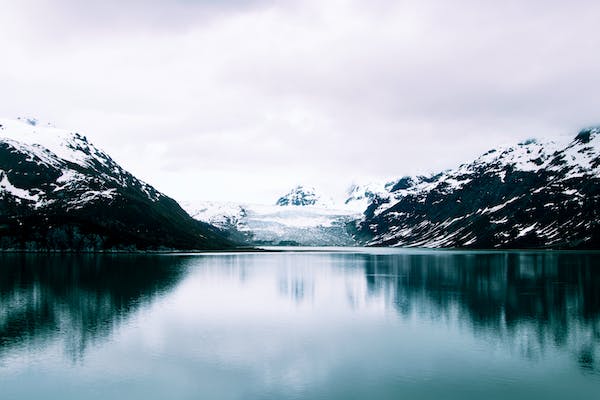Nicknamed the “Crown of the Continent,” Glacier National Park participates as the world’s first international peace park to celebrate the camaraderie and friendship between Canada and the United States. From 1932 up to this day, the Glacier National Park and the Waterton Lakes National Park, Alberton, Canada collaborate in the sustainability, preservation, research, and fire management of these parks.
The Glacier National Park is located in Montana, United States of America. With 1.5 square miles of wilderness and nature, the park houses 71 mammal species, 1,132 vascular plant species, 700 miles worth of hiking trails, 35 named glaciers, and 150 mountain peaks, with some that belong to the three mountain ranges, the Lewis Range, Clark Range, and the Livingston Range.
John Muir, a respected naturalist, is one of the many that have marveled upon the beauty of Glacier National Park as he remarked, “Lake McDonald, full of brisk trout, is in the heart of this forest, and Avalanche Lake is ten miles above McDonald, at the feet of a group of glacier-laden mountains. Give a month at least to this precious reserve. The time will not be taken from the sum of your life. Instead of shortening it, it will indefinitely lengthen it and make you truly immortal.”
HISTORY
George Bird Grinnell was one of the many leaders who joined the naturalists, activists, and conservationists pushing for the creation of the park. On May 11, 1910, the national park was established as the country’s 10th national park, in virtue of former President Taft, who signed the bill. The first director of the national park services was Steven T. Mather. From this time, it was reputed to have had an estimated 150 glaciers.
Research showed that the first inhabitants of the area were the Native Americans, people of tribes, and lineages that trace to the Flathead (Salish) and Kootenai, Cheyenne, and Shoshone. Today, the Flathead Indian Reservation is found in the park’s south and west, while the Blackfeet Indian Reservation corners the east’s park.
The Going-to-the-Sun Road, well-known for exhibiting a scenic view of the mountains, was completed in 1932 and is currently called the Sun Road. It was constructed during the Great Depression. This road was enlisted as one that belongs in the National Register of Historic Places. In 1985, it joined the list of places that were designated as National Historic Civil Engineering Landmarks.
To this day, the park is managed by the National Park Service. The park has met 3.3 million visitors per year.
FAMOUS SITES OF THE PARK
As mentioned earlier, in the words of John Muir, Lake McDonald is one of the park’s top sites and is found in the forest’s heart. The park’s largest lake is 472 feet deep, and 10 miles long and has been created out of glacial carving. Embraced by the mountains on the north, south, and east as a spectacular backdrop, the breathtaking view is not only about the lake. It’s everything: from the mountains to the wildlife that reside nearby such as bighorn sheep and mountain goats. Visitors can also try out activities like using kayaks, paddleboats, and rowboats.
Apgar Village, found at the western end, is one of the most frequented by travelers. Lake McDonald is found in this area. Cozy cabins, Gift Shops, Warm Lodges, and the Transit Center are located here.
Two Medicine is an equally thrilling destination because of the cascading waterfalls, breathtaking lakes, astonishing vistas, and exciting trails. Even before the Going-to-Sun-Road construction, this place has been at the top of the journeyer’s list. It is said that the Blackfeet, in the past, have undertaken their sacred rites of passage in this spot.
The next must-go-to is yet another place starting with “Two”: the Two Dog Flats. If seeing the elks and bears are part of the bucket list, the Two Dog Flats is a roadside stop before entering the park from St. Mary’s. The Two Dog Flats Grill nearby is the best family-friendly restaurant that offers its hungry guests a classic American Menu, with creative build-your-own burgers, fresh salads, and refreshing coolers.
ACTIVITIES IN THE WINTER
As the snow accumulates in this park, cross-country and snowshoeing are its new trends. The McDonalds Falls Trail and Sacred Dancing Cascades Trail are found in the Upper Lake McDonald Area. For the skiers that are new to this activity, the Avalanche Picnic Area Trail is perfect.
Thrill-seekers would be invited to take another route by choosing to mountain climb. This is possible, and the park offers programs and guides for it. If families are split between snowshoeing and country skiing, some areas accommodate both. The Smoky Bear Ranch provides their expertise and guidance to help travelers plan their winter vacation.
Lastly, one thing to remember about the park is that the park has welcomed more than 100 million visitors. The park’s wildlife has hardly ever changed, and much support is given to regulate the park by visiting the place. Indeed, to join this party would be more than just a fun delight!

